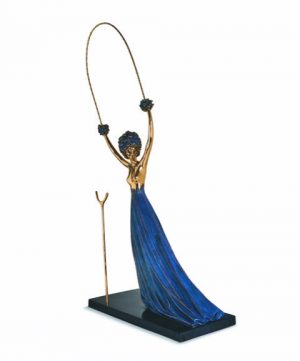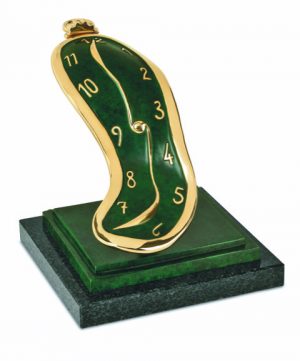The theme of the birdman comes from antiquity. In ancient Egypt he appeared as Horus, a God with a man’s body and the head of a falcon; Horus being the Egyptian God of the sky. In this sculpture, Dalí combines two incongruous parts, substituting the head of a human figure with the head of a heron, sculpting a half-human, half-bird-like figure. Curves, drapes and hair emphasize the sculpture’s fluidity and sophistication.
For the body of the sculpture, Dalí took inspiration from the statue of Antinous (1543) from the Belvedere Gardens in Rome, now part of the Vatican collections. Antinous was a young Bithynian Greek, a favorite of the Roman Emperor Hadrian. Dalí takes inspiration both from the figures posture, and from the position of the drape on the left arm.
In this sculpture, Dalí wishes to illustrate his vision of metamorphosis and his obsession with birds, and their anatomy.
Date: conceived in 1972, first cast 1981
Material: bronze
Technique: lost wax process
Edition size: 350 plus 35 EA
Height : 27 cm
Edition : patina blue
Maquette: original plaster, Birdman, 1972
Direct intervention (created by Dalí): the idea, image, and original maquette.
Indirect intervention (created by artisans): lost wax process and patina.






